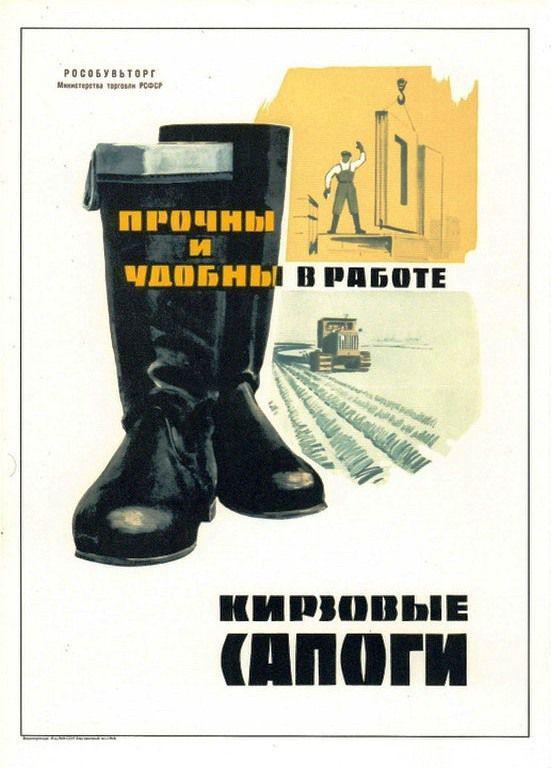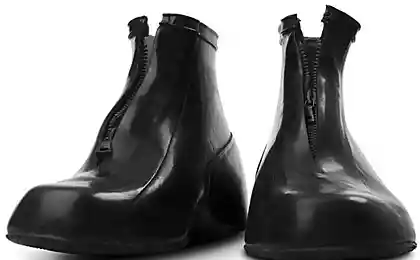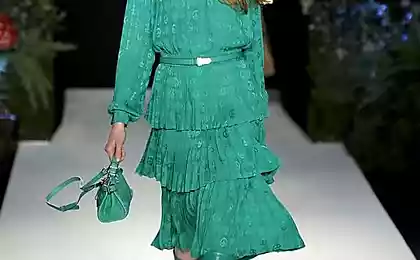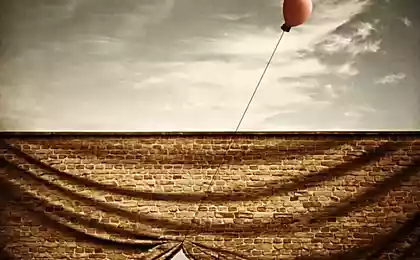1395
Tarpaulin epic

Birth of
By the First World War in a long confrontation army shoes and boots has come to an end. Boots clearly won. Even in those armies, where the manufacture of boots was not enough material foot soldiers still wrapped around almost to the knee. It was a forced imitation boots. In the windings of mustard-colored past wars, such as the British soldiers. The soldiers of the Russian army, by the way, in the First World were the only ones who could afford to flaunt in these leather boots.
As well as about any cult thing about canvas boots walking mass of speculation and rumors. So, one of the misconceptions is that "kirzachi" got its name from the "Kirov Plant", which was established to produce them. In fact, its name legendary boots received the title of woolen cloth Kersey, from which they were originally manufactured.
Also runs many misconceptions about who first created the tarpaulin boots. To dot the i. The priority in this case belongs to the Russian inventor Mikhail Pomortseva. Canvas cloth soaked in a mixture of wax, rosin and egg yolk he received in 1904. The material has properties almost identical to the skin. He did not miss the water, but at the same time to "breathe". First tarpaulin "sniffed gunpowder" on Russian-Japanese War, where it was used for the manufacture of ammunition for horses, bags and cases for artillery.
Material Pomortseva earned high praise as a soldier, and experts of international exhibitions of it was already decided to release a batch of boots, but the weight of their production has not been established. First case prevented tanning lobbyists, and in 1916 Mikhail died. Boots nearly 20 years, "put on the shelf."

Second birth
Revived the production of canvas upper already in 1934. Soviet scientists Boris Byzov and Sergei Lebedev developed a method of obtaining cheap synthetic butadiene rubber sodium that permeated the fabric, making acquires properties similar to natural leather. Further development of the production of tarpaulin boots we must chemist Ivan Plotnikov. It was through his efforts in the country was launched production of "kirzachah».
Combat checks they went back in the Soviet-Finnish War, but the experience ended badly - in the cold boots cracked, becomes hard and brittle. Daughter Plotnikova Lyudmila recalled how his father had told her about the commission, which held a "debriefing" of the new material.
Ivan Vasilyevich was asked, "Why is your tarpaulin so cold and not breathing?". He said: "The bull and the cow has not yet shared with us all their secrets».
Fortunately, for such insolence chemist does not punished. On the contrary - after the start of World War II it became obvious acute shortage of shoes. And then it was useful experience Plotnikov. He was commissioned as soon as possible to improve the production technology of canvas upper. Kosygin was in charge of the issue itself. Carpenters coped with. Moreover, started the production of "kirzachah" Kirov. April 10, 1942, he was awarded the Stalin Prize. By the end of the war there were a canvas boots 10 million Soviet soldiers.

One of the symbols of Victory
Tarpaulin boots earned during the war deserved fame. High, almost waterproof, but breathable, they allowed the soldiers to go many kilometers marches on any road and off-road. About how tarpaulin boots were good, can be seen when compared with the US military boots.
General O. Bradley, author of "A Soldier's Story," wrote that because of the constant dampness American army lost 12,000 combatant soldiers in just one month. Some of them have not been able to recover and then return to the front.
O. Bradley wrote: "By the end of January, disease rheumatism legs reached such large proportions that the American command was a dead end. We were totally unprepared for this disaster is partly a result of his own negligence; by the time when we started to instruct soldiers which need foot care and what to do to not get wet shoes, rheumatic fever has spread to the army with the rapidity of plague ».
Without high boots and socks for autumn and winter front had hard times.

Footcloths
We can recognize that footcloths least ingenious invention than themselves tarpaulin boots. However, they were inseparable. Those who tried to wear tarpaulin boots with the toe knows that socks sure sooner or later get rolled up on the heel. Then, especially if you are on a forced march, and you can not stop, down the drain ... Feet in the blood.
Additionally, more convenient footcloths and in that case they get wet, they are sufficient to wind the other side, then the foot will remain dry and the wet part is footcloths dry meanwhile.
Spacious bootleg "kirzachah" lets in the cold wind on two socks, plus a pawn in their newspapers to keep warm.

People love
This advertising in 1950 was probably unnecessary. Tarpaulin boots after the war became the "National Brand". To date, this shoe produced about 150 million pairs. Despite talk that the army will soon change of notation in the ankle boots, soldiers continue to wear "kirzachi" make them "screws" (rolling up like an accordion) and dress up for the occasion muster. Somewhere at the genetic level, we live in the memory of how our soldiers marched in canvas boots to a great victory.

Source: angreal.info























